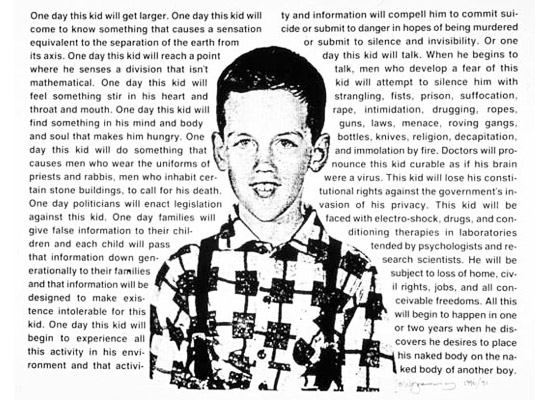A (very) BRIEF HISTORY OF LGBTQ ART AND SYMBOLISM
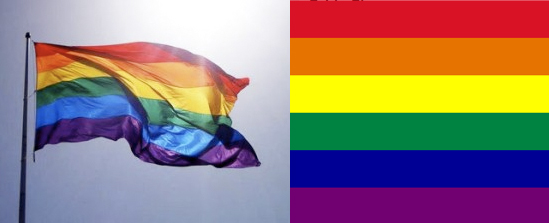
Pride Flags
The rainbow flag has changed dramatically since its first hand-dyed creation by Gilbert Baker and his boyfriend Jomar Teng. The original version of the flag had eight colors, each of which stood for concepts including healing, sunlight, nature, and spirit. Since then, the now-common six color flag is only one of many variations, all of which symbolize the diversity and inclusiveness of the LGBT movement.
Gilbert Baker himself encourages the LGBT community to continue to remake the flag for ourselves. In an UK Gay News op-ed piece, Baker wrote: “In my view the rainbow flag is unfinished, as the movement it represents, an arc that begins well before me, its breadth far broader than all of our experiences put together, reaching the farthest corners of the world with a message of solidarity and a beacon of hope for those who follow in our footsteps.”
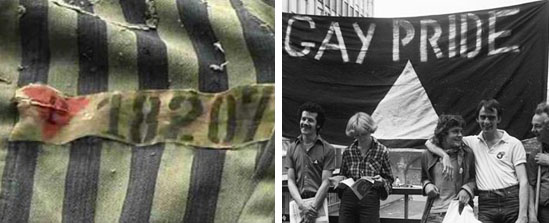
Pink Triangle
Born out of the violence of the Nazi regime, the pink triangle is a reclaimed symbol of oppression now used to show LGBT pride and increase understanding. Gay prisoners in Nazi concentration camps were forced to wear the pink triangle to show that they were homosexuals, which meant that they often received worse treatment and as a result were less likely to survive the camps. Though not everyone embraces the pink triangle as a positive symbol of gay pride, the triangle and inverted triangle have gone through countless variations and remain popular. Like the rainbow flag, the pink triangle is now an image found on pride badges, stickers, and t-shirts, and is a common symbol used to advertise gay-friendly events and activities.

Early Greek Art
The Ancient Greeks produced one of the earliest well-developed examples of gay art. Unlike in other ancient cultures, the Greeks considered free adult male sexual attraction to be both normal and natural. The Ancient Greeks even sanctioned relationships between teenage boys and older men as a rite of passage for males just entering puberty. These homoerotic relationships were the subject of elaborate Greek poetry and art. Vivid images were often painted on black figure vases, hundreds of which survive today. Some of these distinctive vases show an older man giving gifts to a boy, while others show more overtly sexual acts. While the Ancient Greeks understood sexuality in radically different ways than we do today, their art serves as a reminder of a time when same-sex attraction was accepted and even celebrated.
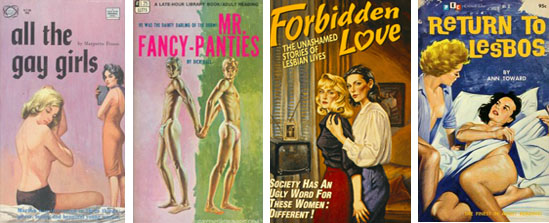
Gay & Lesbian Pulp Art
Lesbian pulp novels from the 50s and 60s featured lurid cover art, with colorful visual innuendo, knowing glances and lots of skin. Now coveted by collectors, these novels began as an affordable form of titillating popular art. In an era before the feminist and gay liberation movements, the sensationalized images on the books’ covers were often the only way for women to read about lesbianism. Women soon understood pulp cover art as a type of code – two women in a suggestive pose with the words ‘strange’ or ‘twilight’ in the title indicated that the book had lesbian content. Gay male pulp fiction, while less popular than lesbian pulp novels, enjoyed a large following that peaked in the early 1950s. These paperbacks included full-color covers with racy titles and stories that addressed taboo subjects like prostitution, rape, and interracial romance. Like other sleazy publications of the 50s and 60s, gay pulp fiction covers showed a fantasy world full of absurd clichés, seductive poses, and muscular bare chests. While today pulp novels may seem laughably over-the-top, they are nonetheless important pop culture representations of gays and lesbians in art.
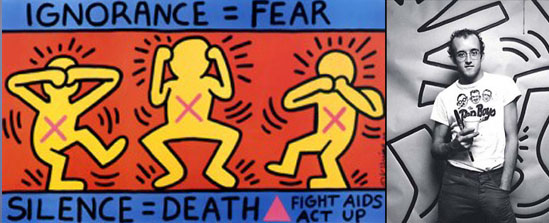
AIDS Art – Keith Haring
Keith Haring was a talented pop artist who dedicated his career to bringing gay art and AIDS awareness to the masses. Between 1980 and 1985, Haring created innovative drawings on empty black advertising panels in the New York subway. Often producing dozens of these drawings in a day, Haring used his art to engage passers-by in the act of creation as well as the resulting images. In 1986, Haring opened the Pop Shop, a Soho retail outlet selling his artwork on t-shirts, posters, toys, buttons, and magnets. While many in the art world criticized the shop’s commercialism, Haring remained committed to sharing his work affordably with a diverse audience. He received a great deal of support from his friend and mentor, fellow pop artist Andy Warhol. After being diagnosed with AIDS in 1988, Haring established the Keith Haring Foundation to raise money and provide art to AIDS organizations and children’s programs. Haring dedicated his art and the two last years of his life to creating awareness and fostering understanding about AIDS. In 2008, two of his brightly colored sculptures were added to UNAIDS “Art for AIDS” collection. Haring’s brief but intense career was only the beginning of his growth as a gay icon. His colorful, provocative, and socially-conscious images form an important part of the history of gay symbolism.
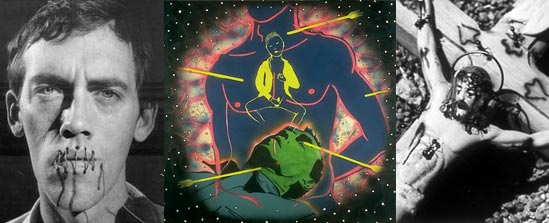
- l-r: portrait; “Peter Hujar Dreaming/Yukio Mishima: St. Sebastian;” “untitled christ 1998”
David Wojnarowicz
Born in New Jersey in 1954, David Wojnarowicz endured an extremely abusive family life, struggled with being a gay youth and subsequently dropped out of high school by the age of 16. To survive, he hustled, lived on the streets of NYC, prostituted, and hitchhiked across the country. In 1978, he settled in NYC’s east village and began his career, as a painter, photographer, writer, filmmaker, performance artist, and activist. His career ran concurrent with the AIDS epidemic of the 1980s. His art reflected that grief, anger, frustration and fear by drawing attention to American religious fundamentalism, conservatism, fear of the body, homophobia, economic imperialism, all while raising up the voices of marginalized and stigmatized individuals. Wojnarowicz died of AIDS in 1992 at the age of 37.
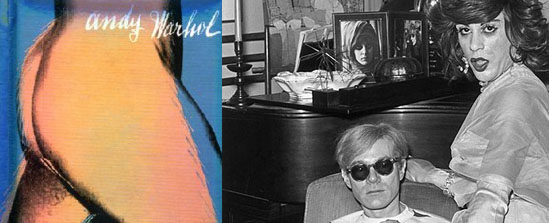
Andy Warhol
An iconic American pop artist, filmmaker, and graphic designer, Andy Warhol blurred the boundaries between art and advertising. Unapologetic about his homosexuality, Warhol often produced erotic photography and male nudes, and his work was heavily influenced by gay underground culture. Warhol’s images, from his Campbell’s soup cans to prints of celebrities including Marilyn Monroe, Elvis, and Elizabeth Taylor, are an astute comment on the materialism and glamor of the 60s and 70s.

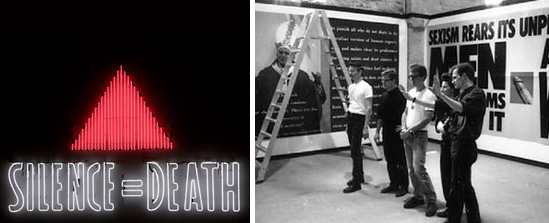
Gran Fury
was an activist art collective that formed in the late 1980s as an offshoot of ACT UP. Gran Fury’s primary objectives were to educate the public, provoke direct action and expose government and civil negligence in regard to the AIDS pandemic. Graphic campaigns, using commercial advertising techniques, targeted the streets rather than galleries and museums. They are perhaps most famous for their image of three interracial couples (straight, gay and lesbian) kissing above the caption “Kissing Doesn’t Kill: Greed and Indifference Do,” as well as their work at the 1990 Venice Biennale where they juxtaposed two billboards: the image of the Pope with a text about the church’s anti-safe-sex rhetoric; the other a two-foot-high erect penis with texts about women and condom use.
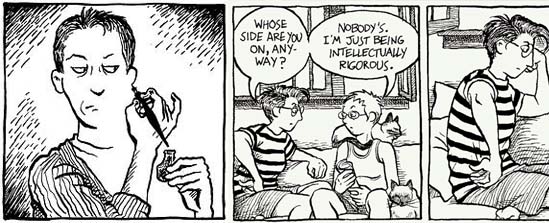
Alison Bechdel
A groundbreaking cartoonist, graphic novel writer, and artist, Alison Bechdel unleashes work that is at once political, tragic, funny, and poignant. Her long-running comic strip Dykes to Watch Out For offers an intimate glimpse into lesbian life in the 21st century. In 2006, she published her first full-length graphic novel, a memoir of family life with an ironic twist called Fun Home: A Family Tragicomic. Bechdel’s work both embraces and surpasses stereotypes to present compassionate portraits of contemporary gay experience. Her unique art and writing firmly establish her as a fascinating new lesbian icon.

Annie Leibovitz
For the past forty years, photographer Annie Leibovitz has produced intimate and often provocative portraits that have appeared in countless major magazines and art publications. Her work includes the dramatic shot of a nude and pregnant Demi Moore, as well as the audacious portrait of a naked John Lennon wrapped around Yoko Ono, taken only four or five hours before Lennon’s death. Her photographs reveal a personal side to celebrity life, and she frequently produces artistic nudes of female celebrities which express vulnerability as well as sexuality.
Some of Leibovitz’s most personal and touching photographs are her portraits of her partner, the late essayist Susan Sontag. Taken over a period of fifteen years, Leibovitz’s portraits of Sontag range from affectionate shots of Sontag at home, to touching portraits captured during her struggle with cancer, to controversial shots taken after her death. The death photographs, which Salon Magazine described as “shocking,” and not fit for publication, are in many ways Leibovitz’s most artistic and courageous work. Both Leibovitz’s commercial photography and her more personal portraits reveal a lesbian artist whose work will remain iconic for many years to come.
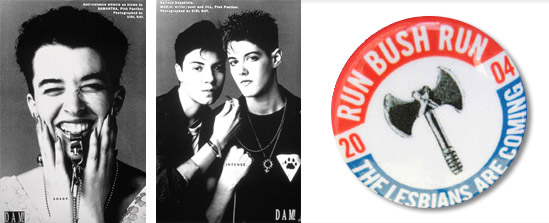
Dyke Action Machine!
(DAM!) is a two-person public art project founded in 1991 by artist Carrie Moyer and photographer Sue Schaffner. Their many satirical lesbian propaganda campaigns have “dissected mainstream media by inserting lesbian images into recognizably commercial contexts, revealing how lesbians are and are not depicted in American popular culture. While questioning the basic assumption that one cannot be “present” in a capitalist society unless one exists as a consumer group, DAM! performed the role of the advertiser, promising the lesbian viewer all the things she’d been denied by the mainstream: power, inclusion, and the public recognition of identity.” (-from the DAM website).

The Human Rights Campaign is America’s largest LGBT advocacy group with more than 750,000 members and supporters. Its logo is a highly recognizable symbol in the contemporary fight for LGBT equality. Created in 1995 by the marketing and design firm Stone Yamashita, under the direction of the HRC’s then executive director Elizabeth Birch, who felt that “A logo is only as meaningful as the hard work and standard of excellence it represents.”
REFERENCES:
Halperin, David M. “Homosexuality.” The Oxford Companion to Classical Civilization. Ed. Simon Hornblower and Antony Spawforth. Oxford University Press, 1998.
Shapiro, Harvey Alan. The Cambridge Companion to Anchaic Greece. Cambridge, Cambridge University Press, 2007.
Qtd. in “Lesbian Pulp Fiction.” Wikipedia.
Bronski, Michael, ed. Pulp Friction: Uncovering the Golden Age of Gay Male Pulps. New York: St. Martin’s Griffin, 2003.
Gay Male Pulp Fiction.” Wikipedia.
Richardson, Ryan. www.gayontherange.com.
“Biography of Keith Haring.” The Keith Haring Foundation.
Day, Elizabeth. “Is it art, or is it a shop? Keith Haring’s iconic Pop Shop is reborn as both.” The Guardian. 2009.
“‘Art for AIDS’ receives Keith Haring Sculptures.” UNAIDS. 28 Nov. 2008.
“Rainbow Flag.” Wikipedia.
Qtd. in Johnson, Ramon. “Gilbert Baker, Creator of the Gay Pride Flag, Says Rainbow Flag Not Finished.”
Lautmann, Ruediger. “Gay prisoners in concentration camps as compared with Jehovah’s Witnesses and political prisoners.” Jewish Virtual Library. 2010.
Qtd. in “Annie Leibovitz.” Wikipedia.
Karnasiewicz, Sarah. “Annie Leibovitz’s reckless candor.” Salon.com. 18 Nov. 2006.
